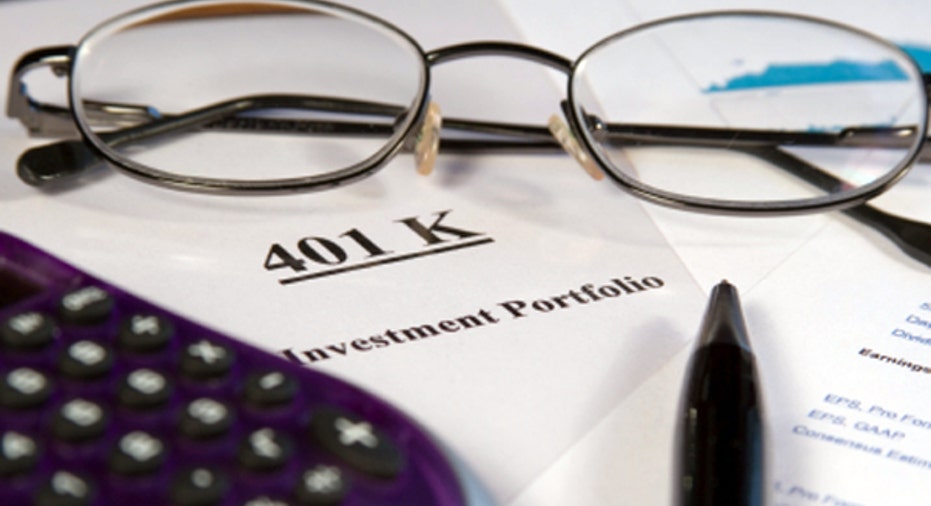Bad Behavior Persists in 401(k) Accounts

Yes, stocks have been on a real tear lately, but guess who hasn't been along for the ride: The millions of 401(k) investors who "moved to safety" after the 2008-2009 market and never felt comfortable enough to move back to stocks.
Participants in 401(k) plans ended 2012 with less than half of their assets invested in stocks, down from 59% at the end of 2006, Chicago-based Spectrem Group reported on Tuesday. That's despite the fact that the S&P 500 stock index rose 6.4% over that period and has more than doubled since it hit bottom in March 2009.
"The population of participants has really remained a little more conservative and really hasn't benefited as much ... (as non-retirement investors) ... from the economic and stock market rallies of the last couple of years," said George H. Walper, Jr., president of Spectrem Group, a market research firm.
Some of that is probably not so bad. Participants trimmed risky holdings of their own company stocks from 19% of portfolios at the end of 2006 to 13% at the end of 2012. And some of the money that came out of stocks went into balanced funds that typically hold stocks as part of their mix.
But the fact that many workers pulled their retirement savings out of stocks after they fell and did not buy back in time to take advantage of the current bull market is worrisome.
At the end of 2012, participants held a whopping 21% of their assets in stable value funds, essentially insured packages of bonds perceived as being super safe, but which can have high fees and little upside potential.
Emotionally driven investment decisions are just one of the trouble spots in 401(k) accounts now. Another problem area is the so-called "rollover minute," when departing workers have to decide whether to let their 401(k) assets stay where they are, bring them to a new employer's plan, or roll them over into a private individual retirement account.
Not so coincidentally, the big companies managing workplace retirement plans also offer their own direct-to-consumer individual retirement accounts. And on Wednesday, the U.S. Government Accountability Office confirmed what's already been quietly discussed at the Consumer Financial Protection Bureau: Some plan service providers (the people who man the 401(k) advice telephone lines for employers) steer workers away from 401(k) plans and toward privately owned IRAs the service companies sell. Sometimes, they go so far as to mislead those workers along the way.
The GAO had an investigator pretend to be a somewhat clueless employee getting ready to change jobs and call 401(k) plan service providers to ask questions about what to do with his plan. He called 30 different service providers and several pushed him away from the 401(k) to the IRA.
That's of concern, said the GAO and several key members of Congress who released the study because workers don't really understand the implications of their decisions at that point. In many cases, workers would be better off leaving the money in the 401(k), where fees are often constrained and investments are pre-screened.
"For most workers, their 401(k) is their largest financial asset and they have a right to full and fair information on all of their investment options," Rep. George Miller, a California Democrat and two Senate Democrats - Tom Harkin of Iowa and Bill Nelson of Florida - wrote to the Labor Department.
Workers who may be well aware of how important their 401(k) savings are to them might still be stymied by how to protect those savings at these inflection points. Here are some tips.
- Learn as much as possible. Too many disclosures are still being written in legalese and employers and their representatives might be reluctant to offer actionable investment advice, especially if it involves taking risks. But it's your money and you can't afford to wait for your employer or your congressman to optimize it for you.
- Protect yourself from your own emotional decisions. An easy way to do that is simply to invest in the target date funds offered via most 401(k) funds. That will keep your percentage of stocks and bonds on track, regardless of how fearful or greedy you feel at any particular point in the market's cycles. Alternatively, you can seek professional investment advice on how to invest your 401(k) and then stick with that, rebalancing every quarter or six months. Most well-developed 401(k) plans will automatically balance your assets for you, if you direct them to.
- Look at your personalized performance figures and compare them to the performance of the funds you own. It's standard for good 401(k) accounts to offer this information. If you consistently do worse than the fund you invest in, that's probably because you are hurting yourself with your own trades.
- Don't be cowed into moving your money before you are ready. If you've got $5,000 in your company's 401(k) plan, you typically have the legal right to keep it there when you move on to another job or retire. Why would you want to? Often 401(k) plans negotiate the lowest possible fees on investments. And they curate the funds they offer, so your choices may be fewer but could be better. Finally, folks between 55 and 59 1/2 are allowed to take penalty free withdrawals from 401(k) accounts but not from IRAs.